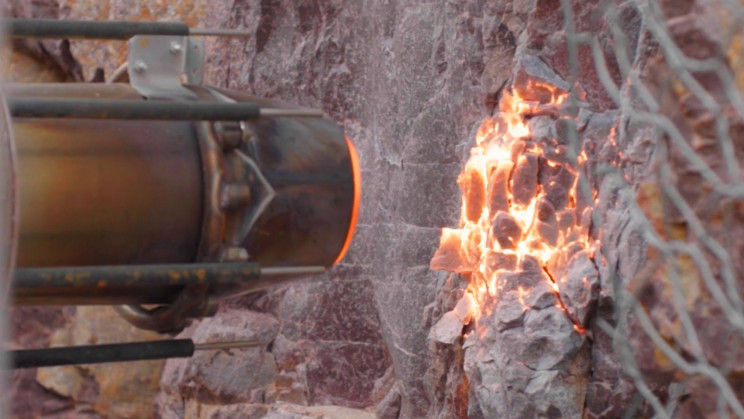“If at first an idea is not absurd,” Albert Einstein said, “then there is no hope for it.” And humanity’s greatest accomplishments usually come after years of trials and tribulations and often with “our backs against the wall.” We have asked whether humanity can survive to 2100 and it may come down to bold projects like “Luna Ring” to create a sustainable planet.
A New Global Energy Infrastructure
For 5 billion years, give or take, the Sun has been shining on the earth. Over this time, living organisms, mostly plants and microorganisms, have developed the ability to store the sun’s energy to support life. Forests and lands of all kinds: tropical, temperate, woodlands, grassland, tundra, alpine, desert, cultivated land, swamp and marsh, lake and stream have stored an estimated 400 zettajoules (JZ) (10 to the 21st power) and every year an additional 2.5 zettajoules is added to the Earth’s “Energy Budget.” In addition, there is an estimated 2,500 ZJ of uranium deposited in the Earth.
Joules are units of energy, work or heat defined by the International System of Units. A joule is the energy needed to apply a force of 1 Newton (N) through a distance of 1 meter (m) aka a newton-meter or N-m. A Zettajoule is equal to one sextillion or 10 to the 21st power. With the world consuming about 0.5 ZJ of energy a year, simple math shows all remaining fossil fuel resources on Earth will be exhausted in 100 to 200 years.
The main issue, of course, is the “negative externalities” of fossil fuel and nuclear energy use: pollution, green house gas effect, and scarcity. By using renewable energy, humans may be able to “kill three birds with one stone.”
Fossil Fuel Equation: Formed in the Distant Past from the Remains of Living Organisms
The following numbers are from the Global Climate and Energy Project at Stanford University and were prepared by Wes Herman and A.J. Simon.
- Gas – 50 JZ
- Oil – 110 JZ
- Coal – 270 ZJ
- Methane Hydrate – 200 ZJ
- BioMass – 1.2 JZ
- Commercial Biofuels – 0.15 JZ
The world has accumulated its fossil fuel “Energy Budget” of 400 ZJ as seen in the following image:
Renewable Sources of Energy in Zettajoules:
Renewable forms of energy can add significantly to the Earth’s “Energy Budget” if they can be harnessed efficiently. The following numbers are per year:
- Geothermal – 13,000 ZJ – currently available and renewable (according to an MIT study)
- Waves – 3.7 ZJ
- Ocean Tides – 3.5 ZJ
- Solar – 3,850 ZJ
- Hydro – 0.36 ZJ
- Rivers – 5.4 ZJ
- Wind – 870 ZJ
A Solution to the World Energy Crisis in Three Steps
Step 1: Establish Lunar Bases
As we reported, Stephen Hawking believes lunar exploration and the establishment of a base on the moon is a key step toward doing the same on Mars and developing the technology and platform to explore our solar system. The image below shows Shimizu Corporation’s idea for a moon base made of high tech radiation blocking concrete using lunar resources. The company has an ongoing R&D program which includes ongoing joint studies with McDonnell Douglas Aerospace, that would employ robot construction systems and self-assembling structures, minimizing human exposure to hazardous conditions.
Step 2: Building a Space Hotel
With the privatization of the US program, a number of companies, including SpaceX and Orbital Systems, are developing new “space launch” systems. In addition, companies like Virgin Galactic and XCor Aerospace’s Lynx Suborbital will soon be bringing “starry eyed” tourists into space. It won’t be long before tourist ships go beyond lower earth orbit and a space hotel is built on the moon.
Step 3: Building a Luna Solar Ring to Power the Earth and Space Missions
With the knowledge and experience that will come from the two projects above, likely doable in the next couple decades, Shimizu May be able to reach its tentative “Luna Solar Ring” construction start date of 2035. Click here for a link to Shimizu’s project outline.
The “Luna Ring” would be a 400km wide x 11,000km long ring of solar cells at the moon’s equator so that energy could be produced 24×7. The energy generated would be transmitted to earth as microwaves and laser light, with some kept to power a lunar base.
“Luna Ring” would produce a nearly inexhaustible supply of energy. According to Shimizu’s Tetsuji Yoshida, the earth will consume about .57 ZJ of energy annually by 2035, and the “Luna Ring” would produce roughly that amount, completely eliminating the need for fossil fuels.
When microwaves reach the earth, they are converted to DC energy using rectifying antennas or “rectennas.” Receiving stations would be placed around the Earth at the equators where cloudy weather is infrequent.
Shimizu’s Solar Belt Configuration would include: (provided by Shimizu Corporation)
- Lunar solar cells – To ensure continuous generation of power, an array of solar cells will extend like a belt along the entire 11,000km lunar equator. This belt will grow in width from a few kilometers to 400km.
- Electric power cables – The cables will transfer the electric power from the lunar solar cells to the transmission facilities
- Microwave power transmission antennas – The 20km-diameter antennas will transmit power to the receiving rectennas. A guidance beacon (radio beacon) brought from the Earth will be used to ensure accurate transmission
- Laser power transmission facilities – High-energy-density laser will be beamed to the receiving facilities. A guidance beacon (radio beacon) brought from the Earth will be used to ensure accurate transmission
- Transportation route along the lunar equator – Materials needed for the construction and maintenance of the Solar Belt will be transported along this route. Electric power cables will be installed under the transportation route.
Stay tuned for updates on ways the world’s energy equation can be solved in coming IndustryTap articles.






